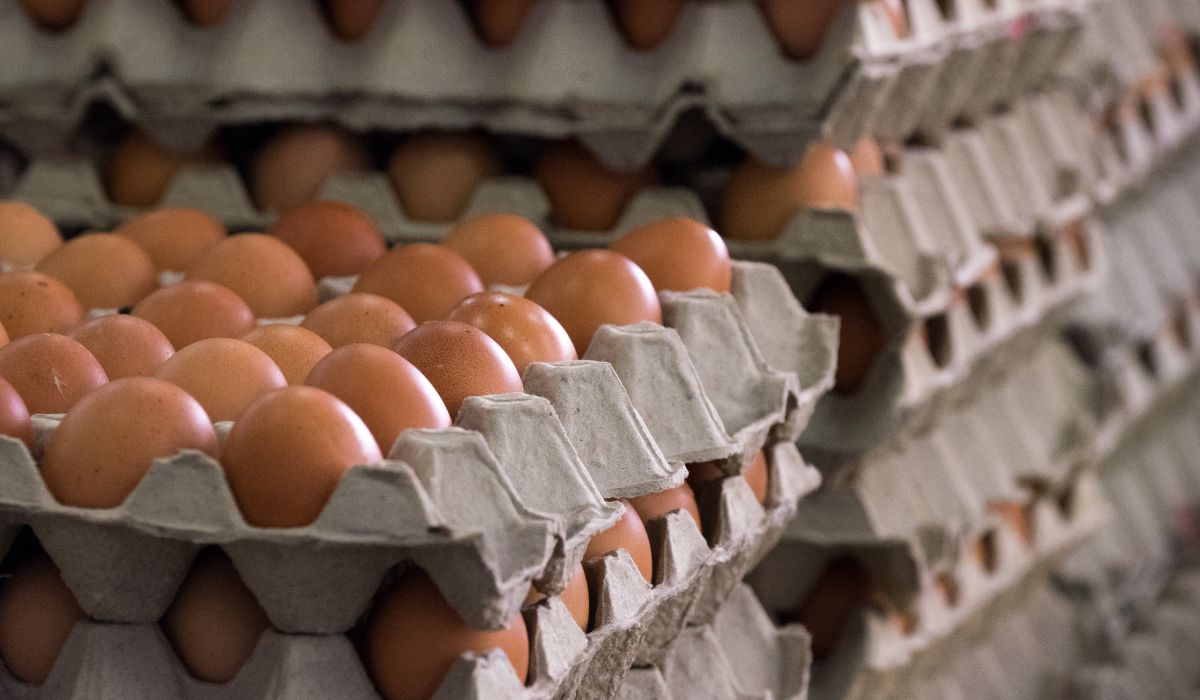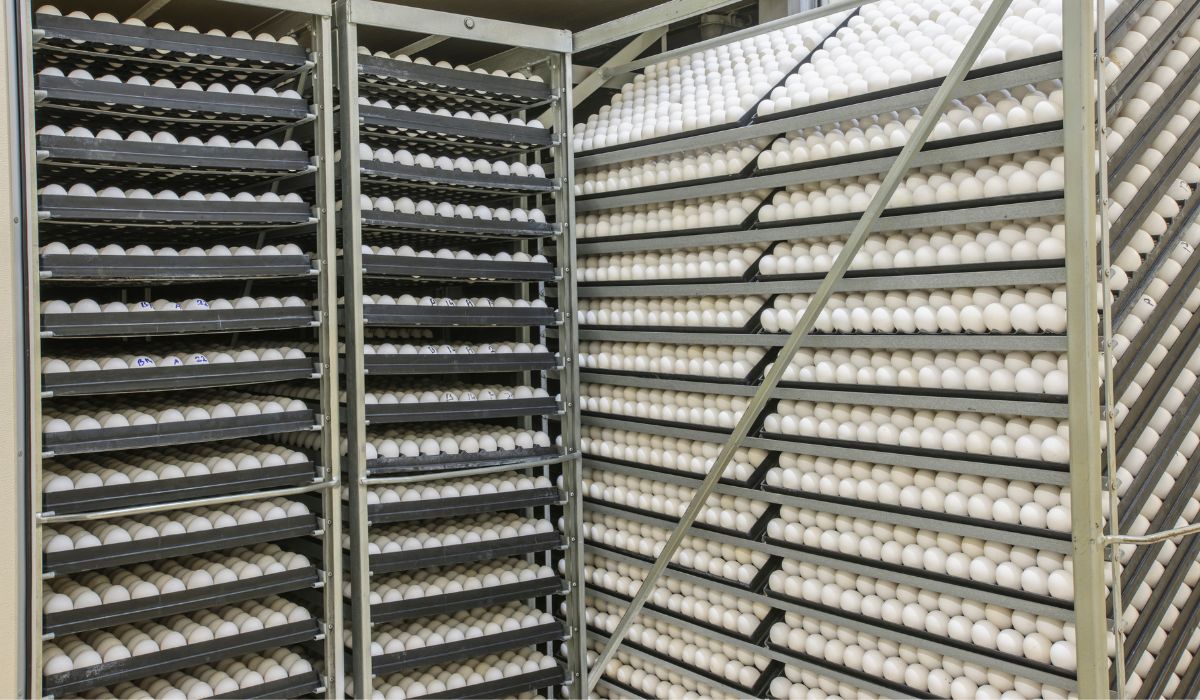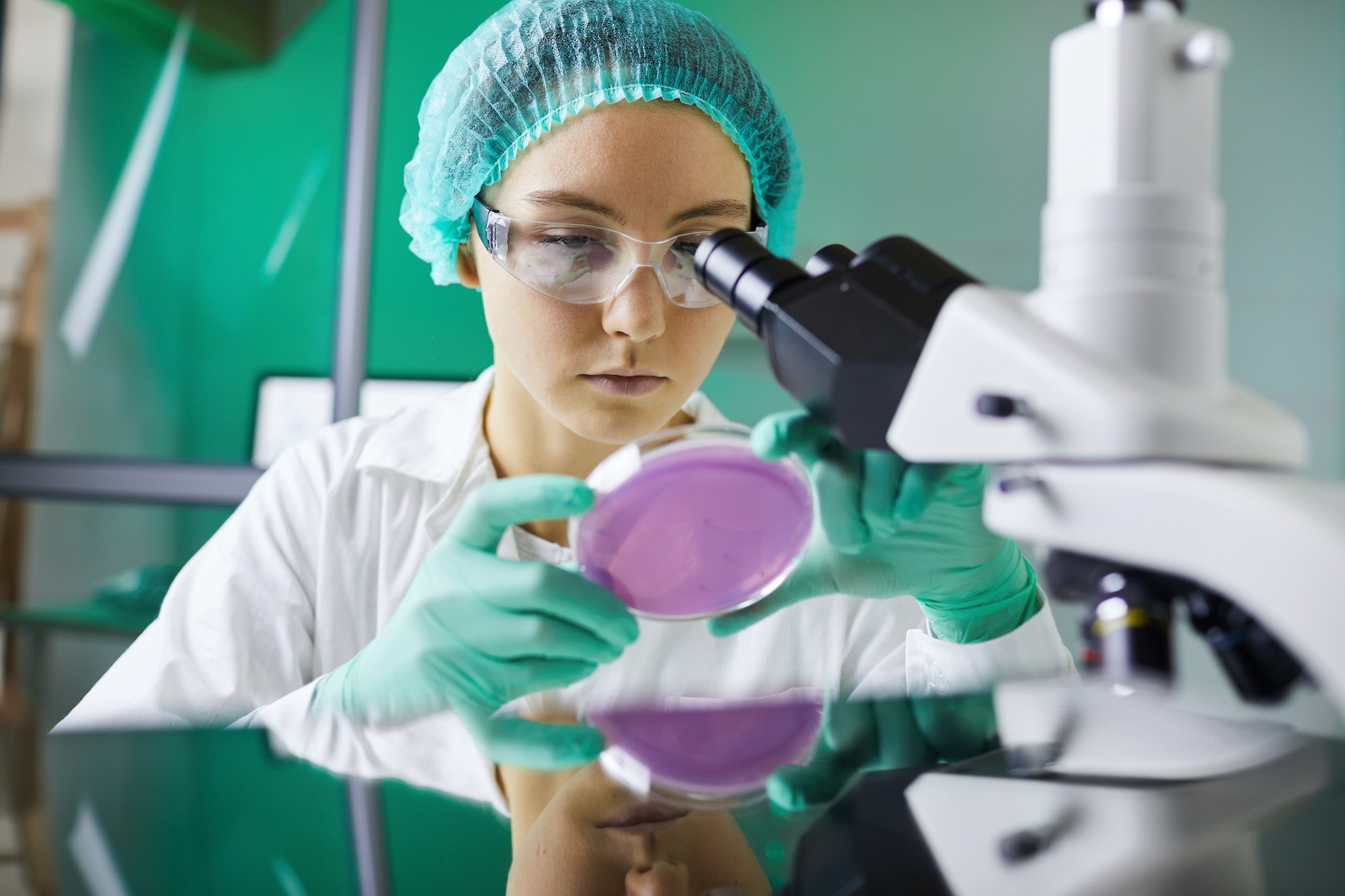In vivo vaccination involves injecting viruses or bacteria into the chicken or duck egg embryo, allowing the cells to multiply and produce large quantities of vaccine.
Once the embryo is vaccinated, the chick that hatches from the egg will be immune to many diseases. In this article you will learn more about in vivo vaccination.
- 1 Why are eggs vaccinated?
- 2 What is in ovo vaccination?
- 3 How in ovo vaccination works: explanation
- 4 The benefits of in ovo vaccination
- 5 Our tips for reducing the risks of this vaccination
- 6 Hatchery hygiene: a key issue
- 7 CEVA: an innovator in hatchery vaccination
- 8 Tools to monitor the performance of vaccinated eggs
Why are eggs vaccinated?
Vaccination of chicken eggs is not only important to ensure the health and productivity of the flock, but also to protect new-born chickens against certain diseases.
Certain poultry diseases can cause considerable losses to farmers due to high hen mortality and reduced egg production. Vaccination of chicken eggs, for example, also has a preventive function against the spread of poultry diseases in the chicken population and to protect them against emerging diseases.
Thus, by protecting chickens from birth, egg vaccination reduces the risk of costs associated with disease outbreaks. In addition, egg vaccination also reduces the need to handle chickens, which can cause additional stress to the animals.
What is in ovo vaccination?
In vivo egg vaccination is an important practice for poultry farmers to protect their flock and ensure the health and productivity of their animals. In ovo vaccination allows chicks that have already been vaccinated to be hatched.
This method of vaccinating chickens before they hatch involves injecting a vaccine directly into the egg through the shell while the chickens are still developing inside. This method is considered more effective and practical than traditional vaccination methods that involve vaccinating chickens after they have hatched.
This is because in ovo vaccination allows chickens to receive a vaccine earlier in their development, protecting them from birth against certain diseases. Another advantage of this method is that it is more hygienic than traditional methods, as it reduces the risk of disease contamination.
How in ovo vaccination works: explanation
In order to hatch already vaccinated chicks, in ovo vaccination involves injecting a vaccine directly into the egg using a specially designed machine equipped with a very fine needle.
The needle inserts the vaccine into the egg through specific points in the shell. Special equipment is used to inject the vaccine in precise quantities at specific points in the egg. This state-of-the-art equipment also allows this operation to be carried out without damaging the inner layers or the embryos.
Once the egg is vaccinated, an incubation phase allows the embryo to develop normally. After incubation, when the chicken hatches, it is already protected against certain diseases. In ovo vaccination is an effective method of ensuring the health and protection of new-born chickens, without stressing them or exposing them to contamination.
The benefits of in ovo vaccination
In ovo (or in the egg) vaccination is an effective and convenient way to immunise chickens before they are born. The main benefits of in ovo vaccination are:
- Improved chicken health: In ovo vaccination can protect chickens against potentially fatal diseases such as avian septicaemia, infectious bronchitis and Newcastle fever.
- Better quality of life for chickens: By preventing disease, chickens can live in healthier and more comfortable conditions.
- Improved profitability for farmers: By reducing health care costs for chickens and increasing the survival rate of animals, in ovo vaccination can improve the profitability of farmers.
- Greater efficiency: In ovo vaccination is more efficient than traditional vaccination methods because it targets chickens before they are born, thus better protecting them from disease.
- Cleaner and more hygienic: In ovo vaccination is cleaner and more hygienic than traditional vaccination methods because it avoids direct contact between chickens and vaccines, which can reduce disease transmission.
Our tips for reducing the risks of this vaccination
Here are some tips to reduce the risks of in vivo vaccination:
- Follow the protocols recommended by health authorities for the preparation and administration of the vaccination.
- Ensure that staff administering the vaccination are trained and qualified.
- Follow eligibility criteria for vaccination, such as medical contraindications.
- Monitor and act on potential adverse reactions after vaccination.
- Keep a record of vaccinations for appropriate follow-up.
- Store vaccines at appropriate temperatures to maintain their effectiveness.
- Inform vaccinees of potential side effects and how to report them.
- Avoid overdose by vaccinating a limited number of people at a time and by observing the recommended time between doses.
- Avoid practices such as diluting or reusing doses that can compromise the effectiveness of the vaccination.
By following these tips, you can reduce the risks associated with in vivo vaccination and help ensure the safety of those vaccinated.
Hatchery hygiene: a key issue
Hatchery hygiene is crucial to the success of in vivo vaccination. It can influence the quality of the final product and reduce the risk of infection for the vaccinated animals. Here are some steps to maintain proper hatchery hygiene:
- Clean the incubator regularly with disinfectants to remove bacteria, viruses and other potential contaminants.
- Avoid cross-contamination by using proper sterilisation techniques for equipment and surfaces.
- Keep animals healthy by controlling diseases and carrying out preventive treatment for parasites.
- Avoid overcrowding in the incubator by maintaining a limited number of animals and providing sufficient space for each.
- Monitor husbandry conditions, such as temperature and humidity, to minimise the risk of infection.
- Avoid unauthorised entry to the hatchery to reduce the risk of contamination from visitors.
- Follow recommended protocols for medical treatment and vaccination of animals.
By following these steps, you can maintain a healthy environment for the animals in the hatchery and reduce the risks associated with in vivo vaccination.
CEVA: an innovator in hatchery vaccination
Ceva Santé Animale is a veterinary research laboratory that operates in over a hundred different countries but is based in Libourne. Since its creation in 1999, the company has been dedicated to finding better cures for existing and new diseases.
By providing the highest possible level of animal care and welfare, Ceva contributes to improving not only the health of animals but also their productivity. With this ambition and its team of passionate and qualified professionals, it is only natural that Ceva is a leader in animal vaccination on the European and international scene.
Always at the forefront of innovation, the Ceva team researches and develops ever more effective vaccines. The company is also responsible for the production and marketing of vaccines.
In addition to vaccines and animal health products, the company is also able to provide technology and training for farmers. Naturally, Ceva provides technical support and specialised services to ensure optimal use of the material.
Powerful machines for egg vaccination
In ovo vaccination is a safe and accurate means of vaccine infection that requires high-performance machinery. Indeed, although reliable, this means of vaccination requires rigorous monitoring to ensure the success of the process.
For example, ECAT-ID’s Egginject machine is fast, accurate and autonomous, allowing safe in-ovo vaccination without vaccine wastage. This CEVA chain is constantly innovating in egg vaccination!
ECAT-ID’s machines also have other advantages, the most important of which are:
- Fast vaccination (up to 60,000 eggs per hour is possible)
- Significant reduction in labour costs compared to subcutaneous or field vaccination.
- Better organisation and logistics
A wide range of vaccines covering several diseases
The Ceva laboratory helps farmers to make their production even more sustainable. Ceva also helps farmers to meet the challenge of diseases. To this end, they offer a wide range of vaccines covering several diseases, including:
- Newcastle disease
- Gumboro disease
- Infectious bronchitis
- Coccidiosis
- Salmonellosis
- Avian influenza H9
- Laryngotracheitis and others.
Tools to monitor the performance of vaccinated eggs
To monitor the performance of an in ovo vaccination, the following tools can be used:
- Antigen-specific immune response measurement tools.
- Protection assessment tools to evaluate the efficacy of the vaccination.
- Growth and health monitoring tools to assess the effects of vaccination on egg development.
- Virological monitoring tools to measure the presence and amount of virus in vaccinated eggs.
- Side effect monitoring tools to detect any side effects of vaccination, such as local or systemic reactions.
By using these tools in combination, it is possible to obtain a complete picture of the performance of in ovo vaccination in eggs.
In ovo vaccination has many benefits for chickens, farmers and the livestock industry in general, as it provides effective protection against disease and improves the quality of life of chickens.
In ovo vaccination of eggs is considered reliable and safe for the production of high-quality vaccines. However, this technique may require a number of complex steps to ensure that the vaccines are safe and effective for disease prevention.



